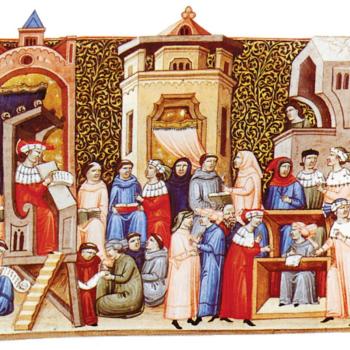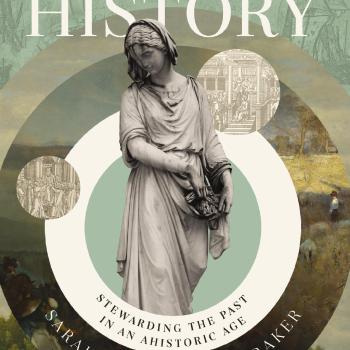I usually save my writing about teaching for my personal blog, but today I thought I’d share more broadly a version of what I said in late March, as part of a panel with some fellow Bethel University teaching award winners. Our colleague Jay Rasmussen (Education) asked each of us to connect teaching with one of Art Costa’s “habits of mind.” Joey Horstman (English) talked about “noticing” as a teacher and Sara Shady (Philosophy) took “persisting,” while I… Well, here’s how I started.
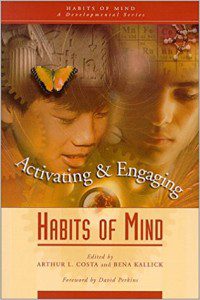 This morning I told my wife about this conversation and mentioned the three habits of mind Jay had picked. “You’re doing wondering,” she responded, “aren’t you?”
This morning I told my wife about this conversation and mentioned the three habits of mind Jay had picked. “You’re doing wondering,” she responded, “aren’t you?”
It wasn’t really a question. I’m the least observant person I know, so “noticing” isn’t in my wheelhouse. And I give up far too easily to reflect on “persisting.” But anyone who knows me knows I spend a lot of time up in my head.
Still, I struggled to know how to talk about what it means to “wonder” as a teacher until I started attaching prepositions to the verb.
Wondering At
For example, I hope that to some degree I always wonder at the privilege of teaching my students and working with my colleagues. That should inspire awe and gratitude in us.
Given where I teach, I often wonder at the glimpses of God’s grace we sometimes see revealed in history… and more frequently, as when I’m teaching the world wars or the Holocaust, I have to wonder at God’s frequent absences from history.
(Note: Costa’s habit is actually “Responding with Wonderment and Awe,” which sounds much like my “wonder at” construction. But most of my talk actually went in the direction of another habit of mind, “Creating, Imagining, Innovating.”)
Wondering If
But more often, I wonder if I could have done something differently, if a class session or semester might have gone better, if, if, if… It’s the wonder of a tinkerer who hates the idea of repeating the same lecture or discussion twice, a wonder animated by dissatisfaction and restlessness. I’m not sure how healthy a habit that is, but it’s what motivates me to innovate as a teacher.
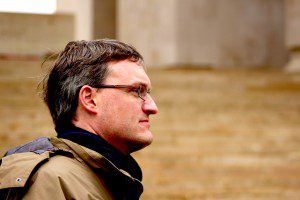
My wife would say that I often seem absent-minded when I’m wondering, but I don’t think that’s quite right. Instead, I’d say that in those moments I’m not being present-minded — but then I’m a historian, and so often past-minded. You can’t do our job if you do not take time to remove yourself from the present to imagine yourself visiting the foreign country o the past.
But I also don’t think you can be a good teacher if you don’t occasionally imagine yourself forward in time, to visit something more like Shakespeare’s undiscovered country. Unless you’re satisfied with repeating yourself, you need to imagine in that direction and wonder if a better way is possible.
Wondering While
You can’t simply wonder in the abstract; it helps to have some sort of embodied activity. At some point you must wonder while doing something else.
To get ready for this talk, I was thinking aloud about wonder with my colleague Sam Mulberry, and he suggested that wonder evokes wander. And it struck me that much of my wondering does take place while I’m wandering: not just on the imaginative journey to the past or future, but on a literal trip. For example, I mentally drafted this talk while driving to work.
Or better… Much of Sam’s and my World War I travel course was first wondered about while I was driving with my wife to visit her parents in Iowa, where seemingly endless Midwestern roads easily led our minds to wander. Then much of the online version of Bethel’s Christianity and Western Culture (CWC) course was wondered through while Sam and I took trains and busses across much of western Europe.
I also do much of my wondering about teaching while listening to other people teach. One of the best things about being a part of a team-taught course like CWC is that I spend a lot of time sitting with students as colleagues lecture. And since I’ve been part of the course almost thirty times now, I no longer need to listen closely for content. It’s a course that raises big questions about identity, community, and purpose, so as I sit there listening, it’s not unusual that a lecture about, say, ancient Rome could prompt me to wonder about a similar question in, say, my World War II course.
Wondering With
That points to another preposition. You don’t wonder by yourself; you wonder with people.
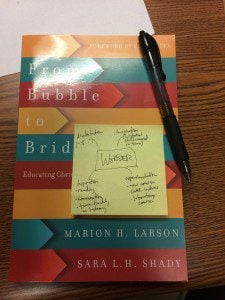
This is why it’s so important for teachers to be readers: you are wondering with the author, whether it’s a book or a blog post. (It’s why I think Sam listens to so many podcasts.) But it also made me realize that wonder can’t be a purely solitary activity; I wonder most effectively when I wonder aloud with other people.
Whatever I’m imagining about a future class only starts to move out of my head and into the world when I talk to Sam or another colleague. (Or my wife, on those trips to Iowa.)
Wondering In
Finally, the teacher needs to wonder in (or into) some sort of space. Nowadays, that can be virtual space. One of the reasons I find blogging so valuable is that it lets me start to wonder my teaching into existence, in front of — or even in conjunction with — a public audience. Indeed, the very first series of posts at my personal blog was a day-by-day preview of the WWI travel course, written eighteen months before it was ever taught.
But eventually it also needs to enter the space of a classroom with students. So I think that every teacher needs at least one course — or part of a course — than can serve as something like a pedagogical laboratory. For me, that’s always been Modern Europe, a 300-level survey of 19th and 20th century European history. I like that there’s a course with prescribed boundaries — the narrative doesn’t change all that much — for the same reason that I like genre writing. I like sonnets with 14 lines and a rhyme scheme because boundaries force creativity. Modern Europe forces someone who hates to repeat themselves to try new methods, new assignments.
(For example, with an eye to teaching that course this coming fall, I spent some time recently in our new maker space, wondering with Kent Gerber, our digital librarian, if I could build a new assignment on material culture in the British Industrial Revolution around the capabilities of our 3-D printers.)
Thanks to Jay for inviting me to share these reflections, and to Sara and Joey for their own inspiring, thought-provoking comments. You can see video of the full session here.





